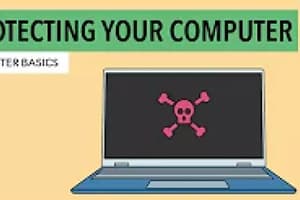Podcast
Questions and Answers
What is the primary goal of pharming attacks?
What is the primary goal of pharming attacks?
- To wiretap email traffic
- To redirect users to a fake website and steal sensitive information (correct)
- To eavesdrop on network communications
- To steal credit card information
What is the term for attacks that originate from inside a business?
What is the term for attacks that originate from inside a business?
- Phishing attacks
- Cracker attacks
- Sniffing attacks
- Insider attacks (correct)
What is the term for malicious apps that contain adware?
What is the term for malicious apps that contain adware?
- Madware (correct)
- Vishing
- Malware
- Smishing
What is the purpose of email wiretaps?
What is the purpose of email wiretaps?
What is the primary security risk associated with mobile platforms?
What is the primary security risk associated with mobile platforms?
What is the term for a type of attack that targets merchant servers and uses stolen data to establish credit under false identities?
What is the term for a type of attack that targets merchant servers and uses stolen data to establish credit under false identities?
What is the primary characteristic of a virus?
What is the primary characteristic of a virus?
What is the term for a malicious code that can be covertly installed on one or more computers when attached to the Internet?
What is the term for a malicious code that can be covertly installed on one or more computers when attached to the Internet?
What is the goal of phishing attacks?
What is the goal of phishing attacks?
What is the term for a web site that seems legitimate but fools users into entering financial data?
What is the term for a web site that seems legitimate but fools users into entering financial data?
What is the term for exploiting human fallibility and gullibility to distribute malware?
What is the term for exploiting human fallibility and gullibility to distribute malware?
What is the result of a computer being infected with a bot?
What is the result of a computer being infected with a bot?
Flashcards are hidden until you start studying
Study Notes
Malicious Code
- Viruses: replicate and spread to other files, can be benign or destructive
- Worms: spread from computer to computer without activation needed
- Trojan horses: hide viruses or malicious code, e.g., fake links
- Drive-by downloads: malware comes with downloaded files requested by users
- Backdoors: allow remote access to compromised computers
- Bots and botnets: malware that responds to external commands, turning computers into "zombies"
Phishing and Scams
- Phishing: deceptive online attempts to obtain confidential info for financial gain
- Spear phishing: targets specific business customers
- Spoofing: creating fake websites to deceive users into entering financial data
- Email scams: fraudulent emails to obtain sensitive information
- Social engineering: exploiting human fallibility to distribute malware
- Identity theft: stealing personal info for financial gain
Data Breach and Fraud
- Data breach: losing control over corporate info to outsiders
- Credit card fraud/theft: hackers target merchant servers, establish credit under false identities
- Pharming: redirecting web links to fake sites, stealing info
Network and Device Security
- Sniffing: eavesdropping on network info, including email wiretaps
- Insider attacks: attacks from within a business (most frequent type of attack)
- Mobile platform security issues: same risks as any internet device
- Vishing: targeting cell phone users with verbal scams
- Smishing: exploiting SMS messages
- Madware: innocent-looking apps with adware
Cloud Security
- Cloud security issues: major issues with Dropbox, including username and password theft, and iOS app security holes
- DDoS attacks: threatening availability of cloud services
Studying That Suits You
Use AI to generate personalized quizzes and flashcards to suit your learning preferences.




